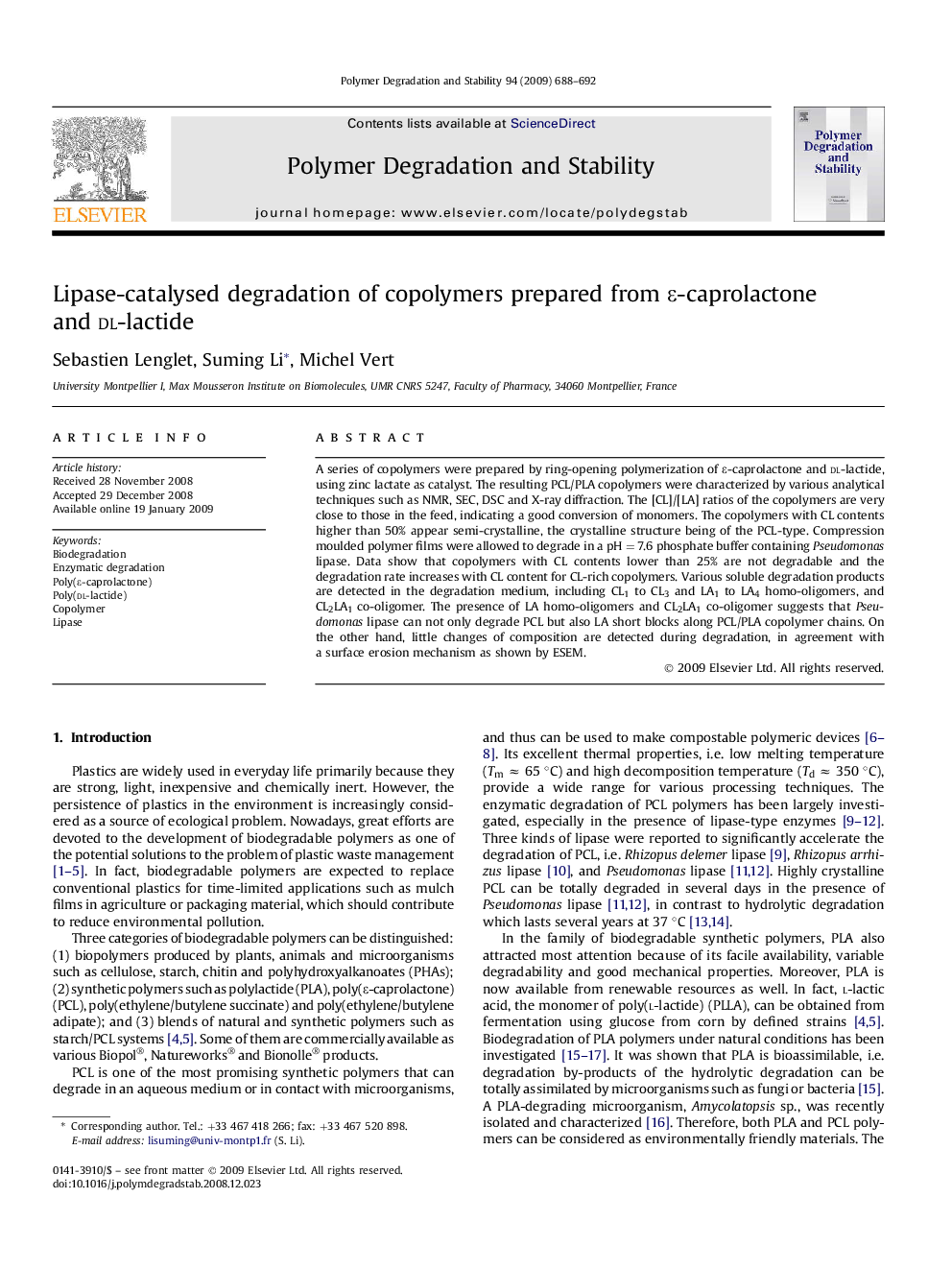| Article ID | Journal | Published Year | Pages | File Type |
|---|---|---|---|---|
| 5203525 | Polymer Degradation and Stability | 2009 | 5 Pages |
Abstract
A series of copolymers were prepared by ring-opening polymerization of É-caprolactone and dl-lactide, using zinc lactate as catalyst. The resulting PCL/PLA copolymers were characterized by various analytical techniques such as NMR, SEC, DSC and X-ray diffraction. The [CL]/[LA] ratios of the copolymers are very close to those in the feed, indicating a good conversion of monomers. The copolymers with CL contents higher than 50% appear semi-crystalline, the crystalline structure being of the PCL-type. Compression moulded polymer films were allowed to degrade in a pHÂ =Â 7.6 phosphate buffer containing Pseudomonas lipase. Data show that copolymers with CL contents lower than 25% are not degradable and the degradation rate increases with CL content for CL-rich copolymers. Various soluble degradation products are detected in the degradation medium, including CL1 to CL3 and LA1 to LA4 homo-oligomers, and CL2LA1 co-oligomer. The presence of LA homo-oligomers and CL2LA1 co-oligomer suggests that Pseudomonas lipase can not only degrade PCL but also LA short blocks along PCL/PLA copolymer chains. On the other hand, little changes of composition are detected during degradation, in agreement with a surface erosion mechanism as shown by ESEM.
Related Topics
Physical Sciences and Engineering
Chemistry
Organic Chemistry
Authors
Sebastien Lenglet, Suming Li, Michel Vert,
